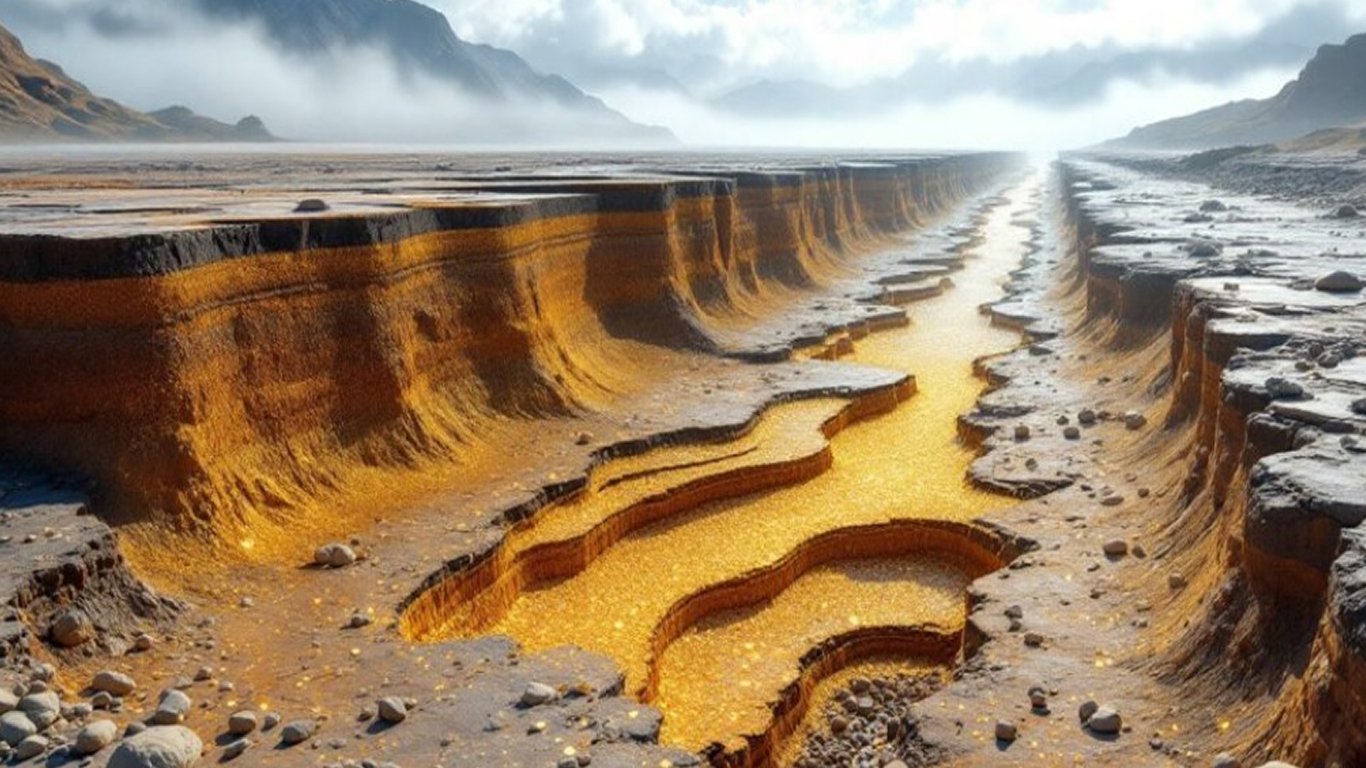Secrets of Forgotten Rivers — What Treasure Lies Beneath the Earth.
today, 12:35
494

Journalist
Shostal Oleksandr
today, 12:35
494

Through tectonics, volcanism, and Time, ancient riverbeds hidden deep underground have become a subject of interest for miners and researchers. Reports from the publication 'Discovery Alert' indicate that gold forms in deep hydrothermal veins, surfacing through chemical processes and tectonic uplift.
'The distribution of gold in paleoriverbeds is the result of hydrodynamic sorting that has no equal in modern rivers'
Why Ancient Rivers Accumulated So Much Gold
Due to its high density, gold was retained in areas with slow currents, forming 'gold-bearing lenses'. Such areas have high industrial value and contain on average from 1.5 to 3 grams of gold per ton of sediment.
How Geologists Find Paleoriverbeds with Gold
- Laser scanning (LiDAR)
- Geophysics
- Satellite images
- 3D modeling
'Machine learning algorithms allow for 92% accuracy in identifying paleoriver structures in deep layers'
What Indicates the Presence of Gold in a Paleoriverbed
- Rounded quartz pebbles
- Iron-rich layers
- Magnetite, ilmenite, zircon
- Red or yellow sediments
- Tectonic structural fractures
The Richest Gold Rivers in the World
- California
- Witwatersrand, South Africa
- Australia
Paleoriverbeds — Archives of the Earth, Not Just Gold-Bearing Entities
- Paleoclimate
- Tectonics
- Hydrology
- Paleoecology
Technologies of the Future for Finding Gold in Paleoriverbeds
- Artificial Intelligence
- Drones with LiDAR
- Multidirectional drilling
- Digital twins
Why Only Some Paleoriverbeds Have Been Studied
Less than 15% of the paleoriverbeds of Africa and Asia have been thoroughly researched. The main reasons are complex terrain, lack of funding, and drilling risks.
Prospects for Science and the Economy
Paleoriverbeds have great potential for scientific research and economic development; however, their development must consider ecological and cultural aspects.
Beneath the earth, ancient riverbeds hide not only gold but also valuable information about the Earth's past, from which scientists can study the history of climate, geological processes, and other aspects. Modern technologies using artificial intelligence and contemporary research methods are helping to discover these ancient riverbeds and study their potential for science and the economy.Read also
- In the midst of extreme heat, Greece introduces new rules - what you need to know
- The famous airline launched free Starlink on flights
- The perfume capital of the world — a city in France with luxurious boutiques
- Rest in Odesa — the water near the shores has significantly cooled down
- Relief from the heat - which regions will surprise with cool weather
- Dream of the 'Mriya' — the commander of the famous aircraft on its revival








